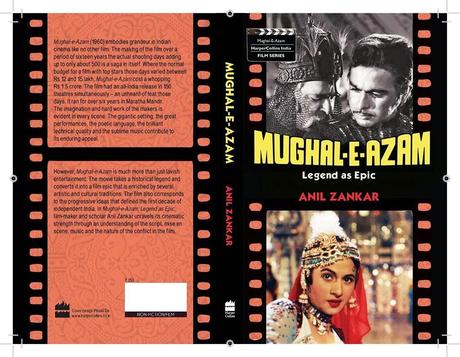 It’s not an
easy task writing about a film that has been called one of the best films ever
to have been made in Indian cinema. Not only was the film great, on numerous
levels, but the fact that it took 16 years from the start of shooting till
release, is proof enough that one must harbor a certain passion for cinema in
order to write about this path-breaking film.
It’s not an
easy task writing about a film that has been called one of the best films ever
to have been made in Indian cinema. Not only was the film great, on numerous
levels, but the fact that it took 16 years from the start of shooting till
release, is proof enough that one must harbor a certain passion for cinema in
order to write about this path-breaking film.
Anil Zankar is a film scholar and his academic background reflects in the way the book it presented and the film analysed. Legend as Epic has been divided into sub parts, throughout, making it a more structured read. The attractive factor of the book is that Zankar doesn’t simply keeps his observations limited to the film, but he goes back and gives a history of how certain artistic and technical aspects, such as script and dialogue, came to develop over time and were eventually utilized in Mughal-E-Azam. There is no question that Zankar is extremely learned in this art form, but unfortunately at times the book takes a more studious approach to the film, and this is where it begins to wane.
One of the problems that I have noticed in books released in this publisher series is that they are not edited well. Here again the ghost of repetition plays havoc, frustrating the reader with the same information being presented again and again throughout the book. Luckily enough, it isn’t as bad as some of the other books, but while reading a 200 page book it is noticeable and irritable.
Leaving the editing aside, what really bothered me was also that Zankar on one occasion explains the “Rhetorical style of speech” used in the film by demonstrating a conversation between Anaarkali and Akbar. Unfortunately, just a couple of pages later, he uses the exact same scene and dialog to demonstrate the “understanding of mise en scene” even though he ends the chapter by stating “the film has a number of dramatic conversations expressing opposite views, for example, between Akbar and Anaarkali, Akbar and Jodhabai, ...Saleem and Anaarkali. They are all treated in a similar manner setting up the intense, dignified atmosphere of the film.” Why then the author decided to use the same scene twice is beyond comprehension.
A film that had twelve song, each integral to the story and the progress of the film, deserves a separate chapter that discusses the beauty of music. Zankar gives due consideration to this, but his rather long chapter on music is full of unnecessary information that literally bored me to the extent that I was compelled to skip a few pages, something I wholeheartedly try to avoid. Once again Zankar has great insight into the various characteristics of the music in the film, but he takes on each song individually explaining the technical aspects behind them along with detailing the actions of the actors on screen. This gets tedious especially when the reader has gone through a chapter wherein the entire story of the film was re-told. Furthermore, so engrossed is the author in looking at every minute technical detail of the film that he completely ignores the human aspect so much so that the reader is left without any knowledge of some of the best acting performances given, ever. Recommendation: Although the Mughal-E-Azam: Legend as Epic might seem like an academic paper at times, one that has all the information but lacks heart, it is still a lovely look at one of the finest films to have been ever made in the world. Zankar’s extreme knowledge is both the high point of the book but also the curse that makes it slow and difficult to read and more importantly difficult to enjoy. Legend as Epic is a great read for serious cinephiles only.

